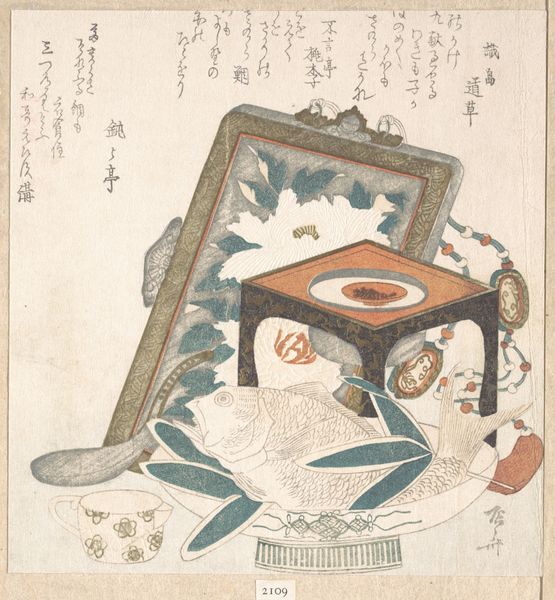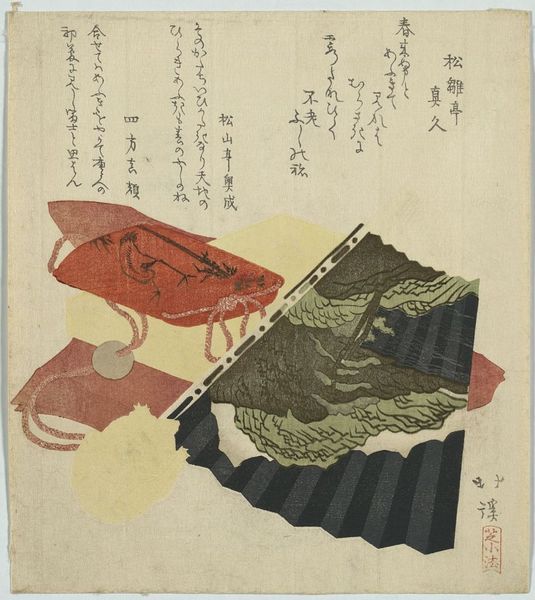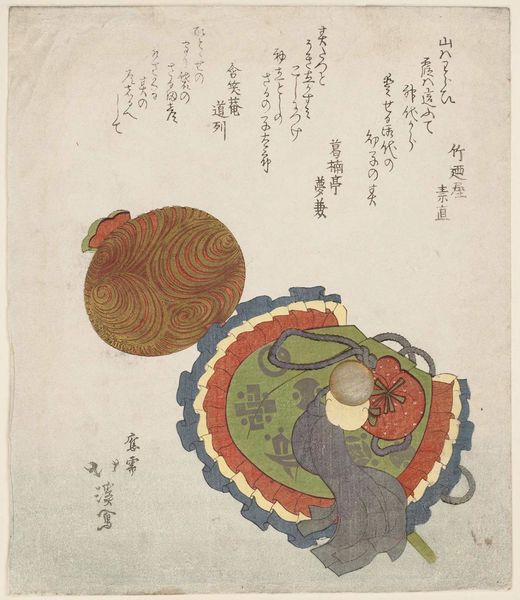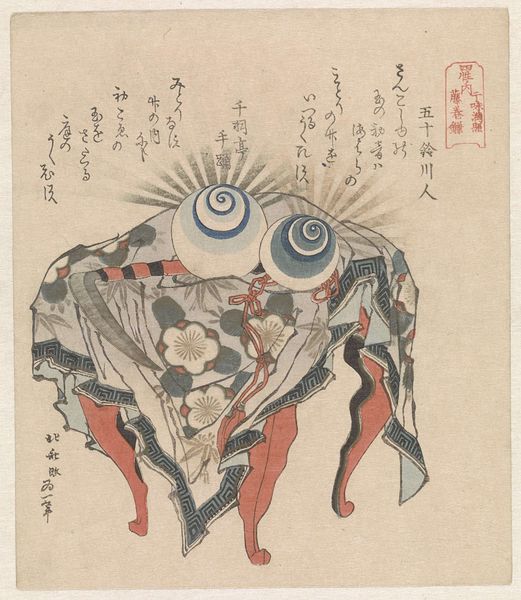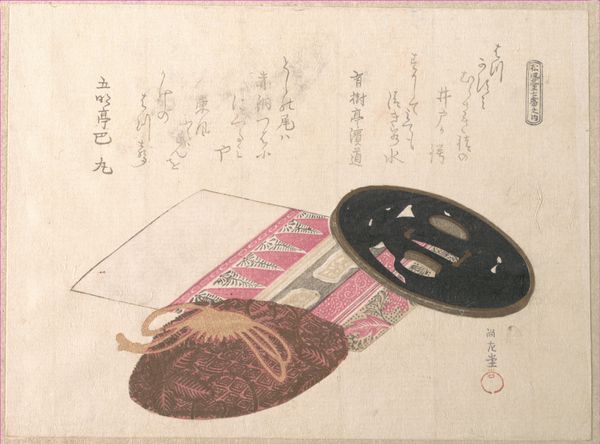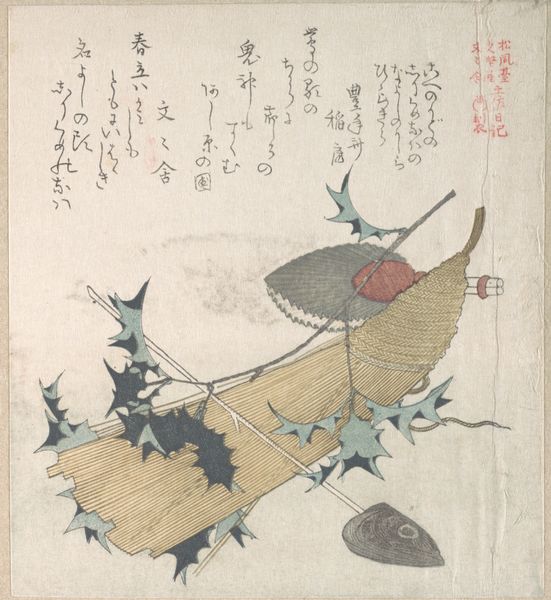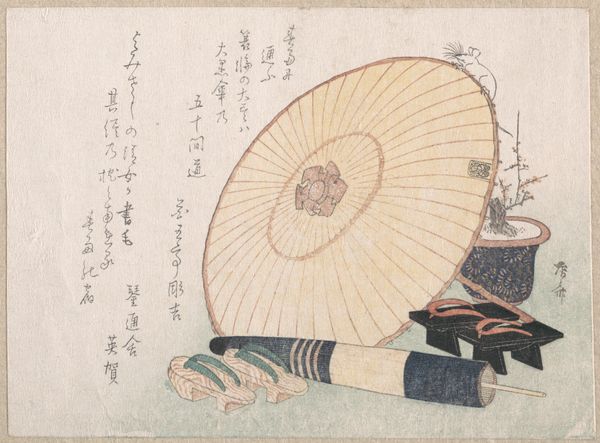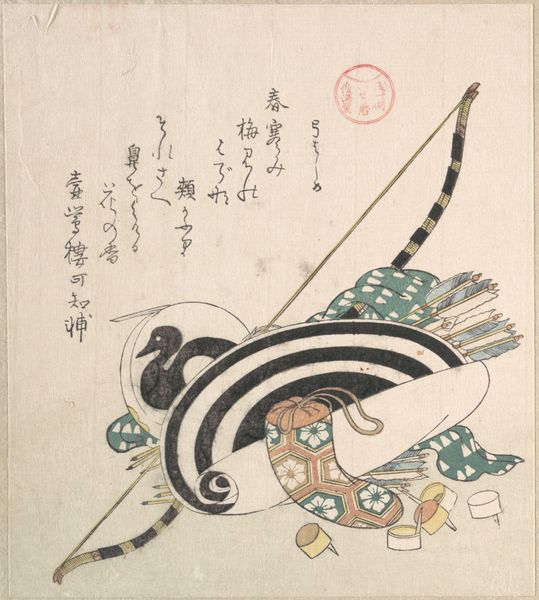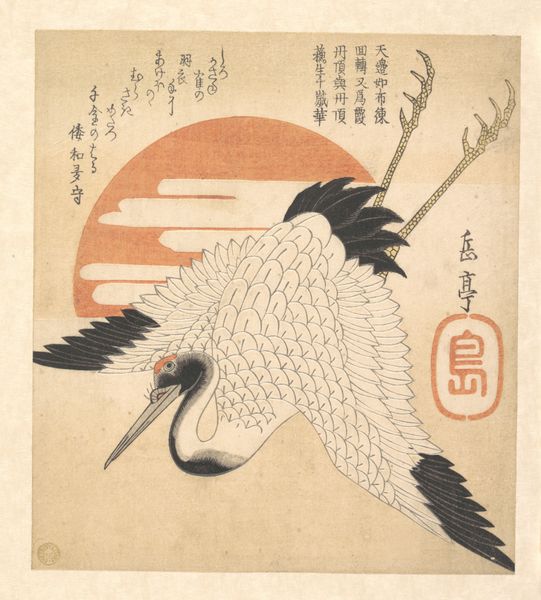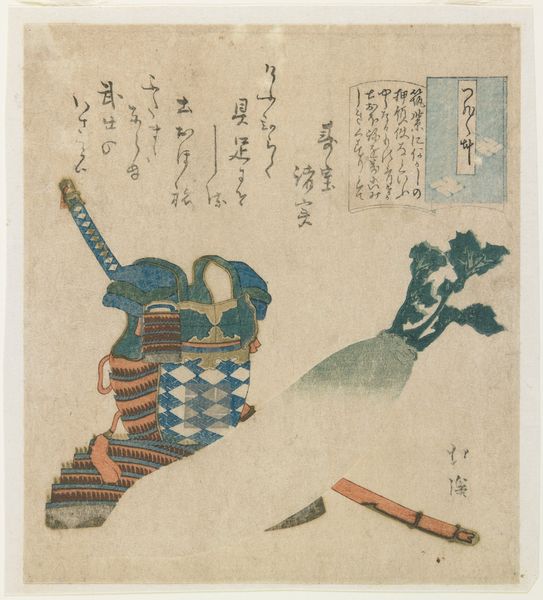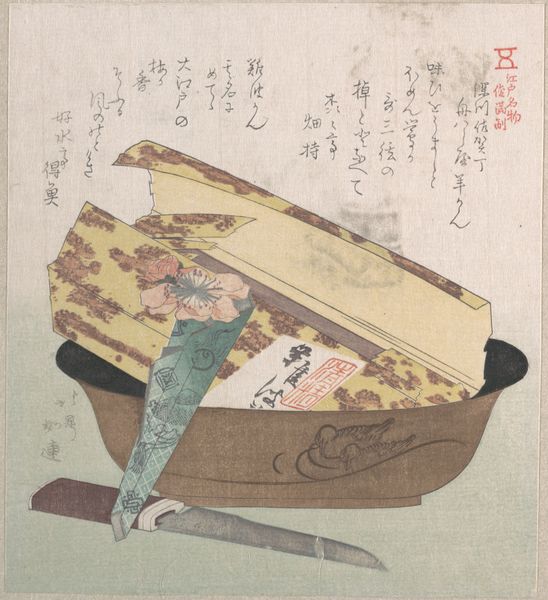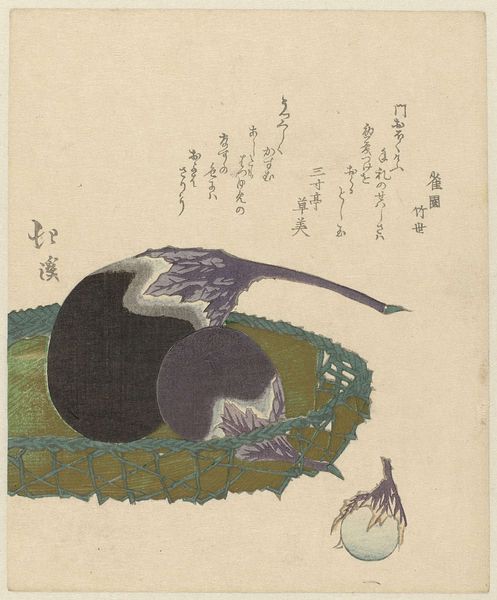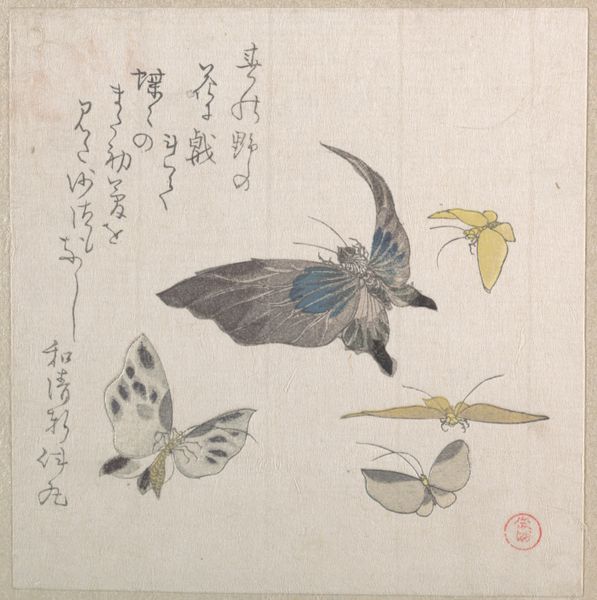
graphic-art, print, paper, woodblock-print
#
graphic-art
# print
#
asian-art
#
ukiyo-e
#
figuration
#
paper
#
woodblock-print
Dimensions: height 204 mm, width 184 mm
Copyright: Rijks Museum: Open Domain
Utagawa Kunisada created this woodblock print, "Two Kites," with ink and color on paper in Japan during the Edo period. This was a time of relative peace and isolation, which fostered a unique artistic culture. Kunisada, as a leading printmaker, navigated the constraints of tradition and the demands of a changing society. Here, the kites transcend mere objects; they are symbols deeply embedded in Japanese culture. The circular kite, or "Igeta," is often associated with a desire for harmony, continuity, and perfection. Kites in Japan were often seen as messengers to the heavens, vehicles for prayers and hopes. The print's emotional depth lies in this interplay between cultural symbolism and personal yearning. They acted as a conduit for emotions and wishes, subtly defying the social expectations of the time, and offering a glimpse into the hopes and aspirations of the people. Kunisada’s kites become a poignant reflection on the human spirit, reaching for something beyond the earthly realm.
Comments
No comments
Be the first to comment and join the conversation on the ultimate creative platform.

